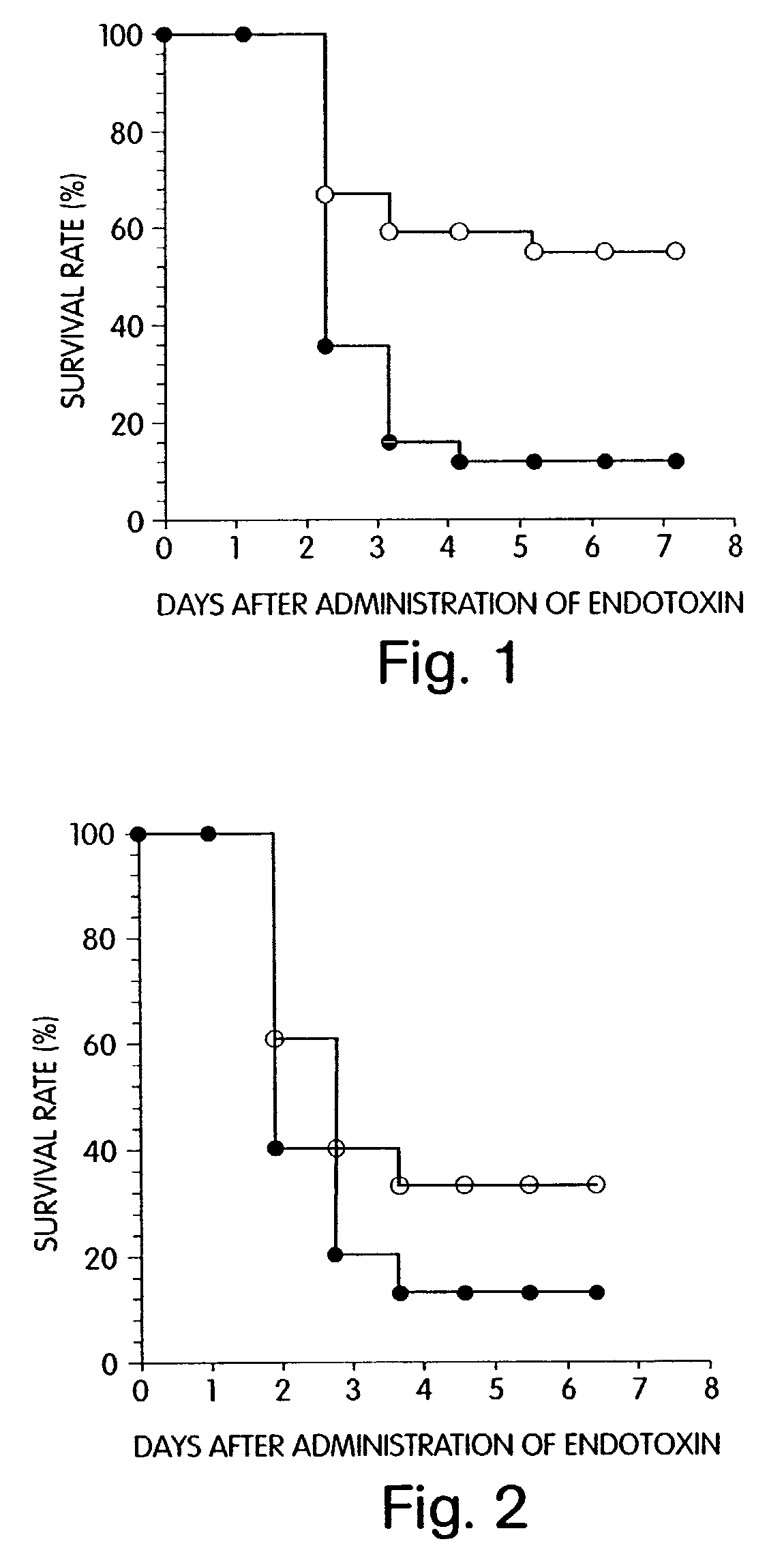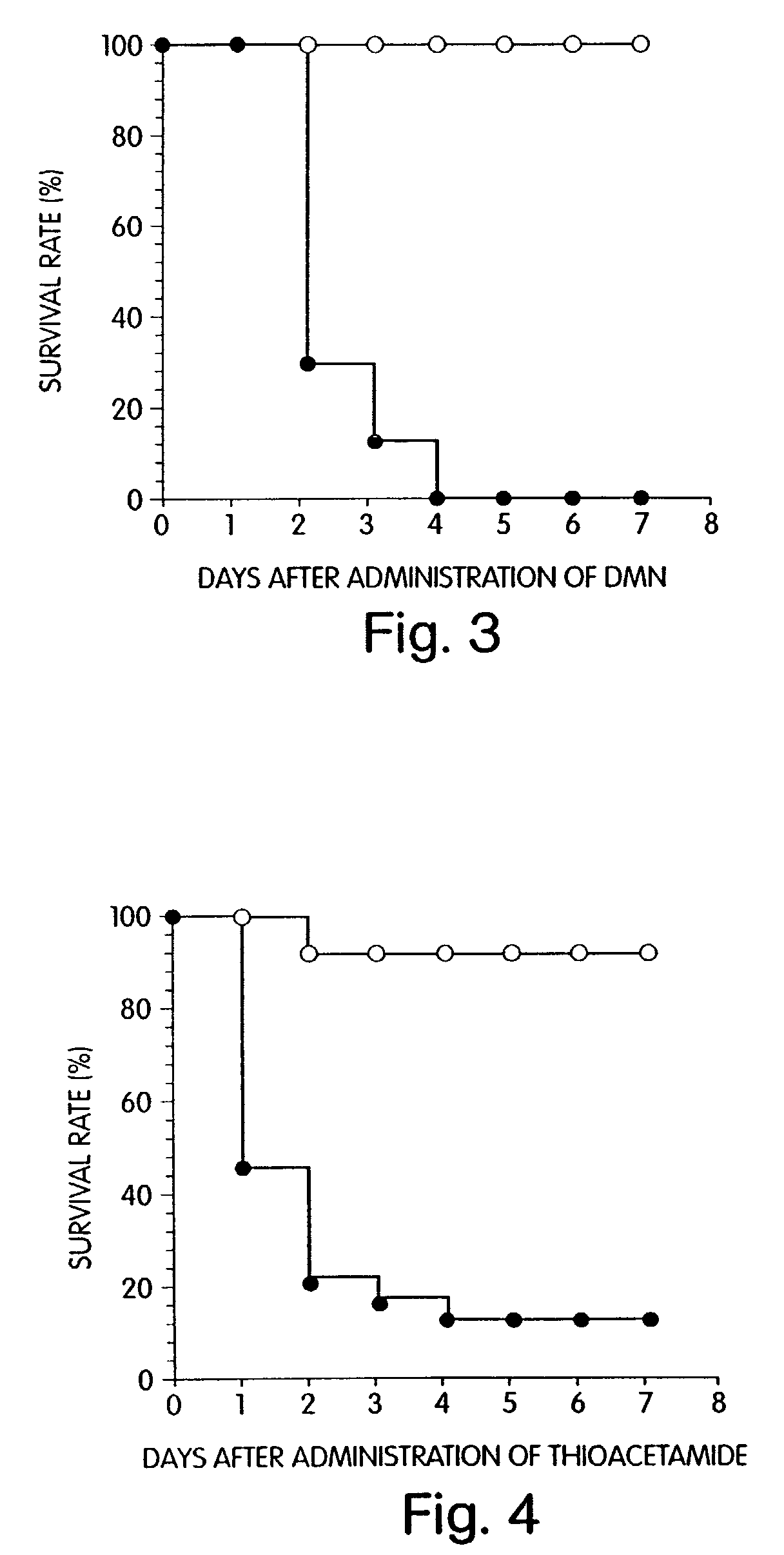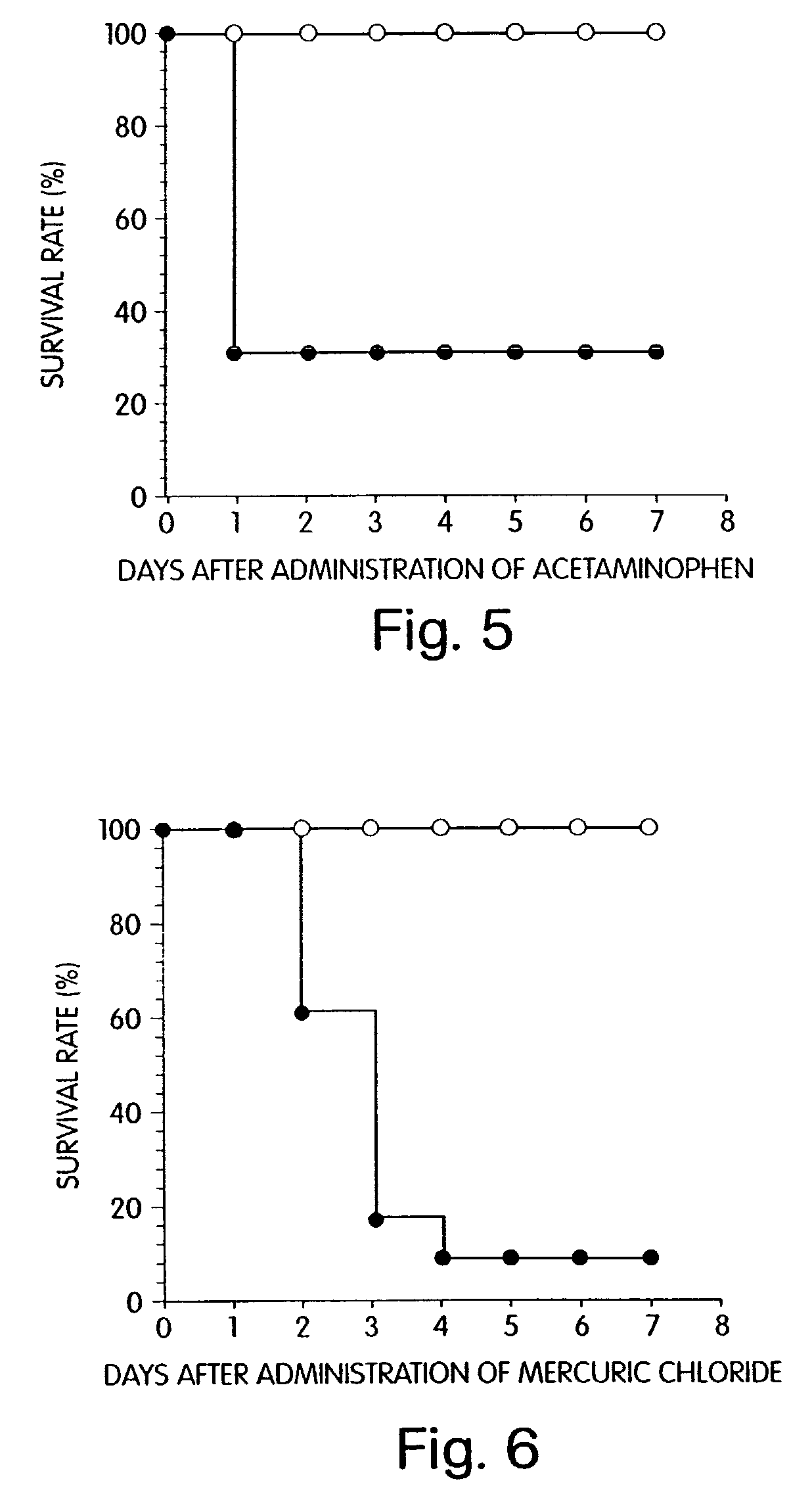Agent for preventing and/or treating multiple organ failure
a technology for multiple organ failure and agents, applied in the direction of tumor necrosis factor, drug compositions, peptide/protein ingredients, etc., can solve the problems of low survival rate and poor prognosis of patients with multiple organ failure, and achieve excellent protective effect on trypsin-induced patients
- Summary
- Abstract
- Description
- Claims
- Application Information
AI Technical Summary
Benefits of technology
Problems solved by technology
Method used
Image
Examples
example 1
Purification of TCF-II
[0029]According to a method described in WO 90 / 10651 and the method of Higashio et. al. (Higashio, K et. al, B.B.R.C., Vol. 170, pp 397–404 (1990)), human fibroblast cells were cultured to obtain purified TCF-II. 3×106 human fibroblast IMR-90 (ATCC CCL 186) cells were placed in a roller bottle containing 100 ml DMEM medium including 5% calf fetal serum and cultured by rotating it at the rate of 0.5–2 rpm for 7 days. When the total number of cells reached 1×107 the cells were detached from the walls of the roller bottle by trypsin digestion and collected at the bottom of bottle. 100 g of ceramic with the size of 5–9 mesh (Toshiba Ceramic) was sterilized and place in the roller bottle, Culture was continued for 24 hours. After then, 500 ml of the above culture medium was added to the roller bottle and the culture was again continued. The total volume of culture medium was recovered every 7–10 days and fresh medium was supplemented. Production continued in this ma...
example 2
Production of Recombinant TCF-II
[0030]According to the method described in WO 92 / 01053, cells transformed with TCF-II gene were cultured and purified TCF-II was obtained. That is, transformed Namalwa cell was cultured and 20 L of culture medium was obtained. This culture medium was treated by CM-Sephadex C-50 chromatography, Con-A Sepharose CL-6B chromatography, and finally HPLC equipped with a Mono S column to yield about 11 mg of recombinant TCF-II. This TCF-II had the same molecular weight and isoelectric, point as described above.
example 3
Production of Recombinant HGF
[0031]Expression vector of HGF cDNA was constructed by inserting 2.4 kb fragment of transcription unit of mouse dihydrofolate reductase (DBFR) into Nhe I site of plasmid pcDNA1 and, further, inserting 2.3 kb of HGF cDNA cloned by Miyazawa (BBRC 163, 967–973, 1999) into the downstream of cytomegalovirus (CMV) promoter. The constructed HGF cDNA expression vector (μg and pSV2 neo 1 μg) were co-transfected into Namalwa cell by liposome intervened transfection method using LIPOFECTIN® (N-[1-(2,3-dioleyloxy)propyl]-n,n,n-trimethlammonium chloride (DOTMA) and dioleoyl phosphotidylethanolamine (DOPE)), Life Technologies, Inc., Gaithersburg, Md. After transformed cells were screened by G418 resistance, gene amplification was carried out using methotrexate (MTX). HGF highly producing cell line was cultured in 2 L roller bottles containing 1 L DMEM medium including 5% bovine serum for 7 days. Culture was carried out using 20 roller bottles (2 rpm) and 21 L of cultu...
PUM
 Login to View More
Login to View More Abstract
Description
Claims
Application Information
 Login to View More
Login to View More - R&D
- Intellectual Property
- Life Sciences
- Materials
- Tech Scout
- Unparalleled Data Quality
- Higher Quality Content
- 60% Fewer Hallucinations
Browse by: Latest US Patents, China's latest patents, Technical Efficacy Thesaurus, Application Domain, Technology Topic, Popular Technical Reports.
© 2025 PatSnap. All rights reserved.Legal|Privacy policy|Modern Slavery Act Transparency Statement|Sitemap|About US| Contact US: help@patsnap.com



